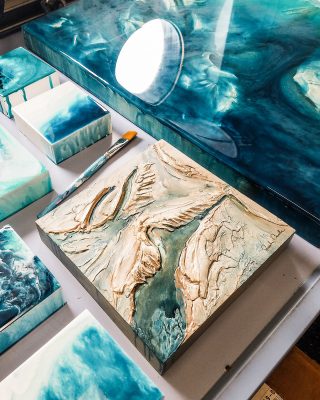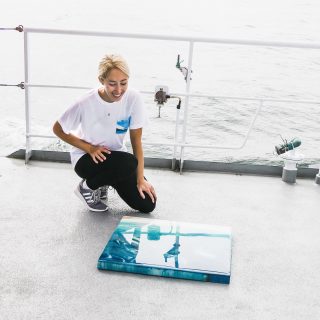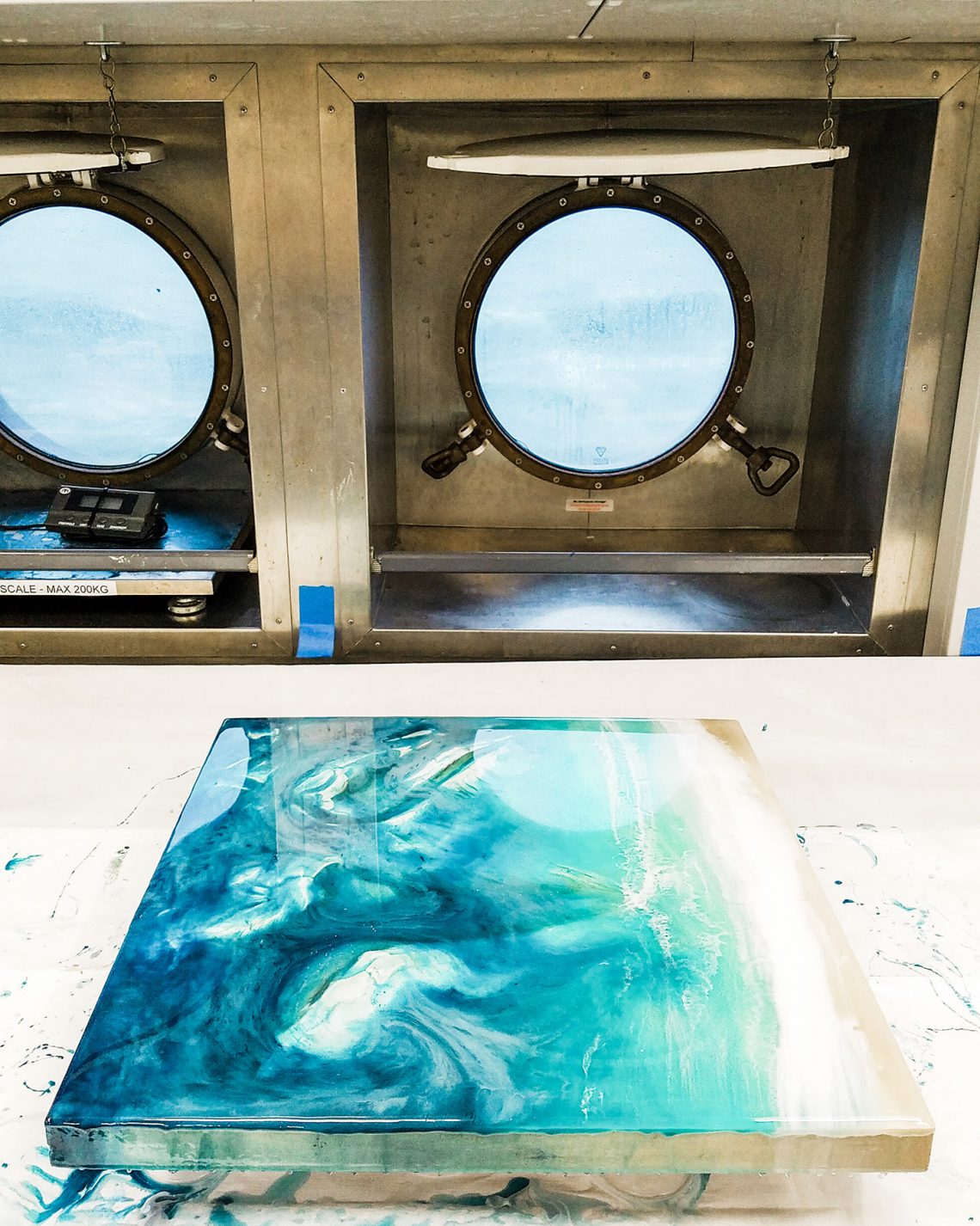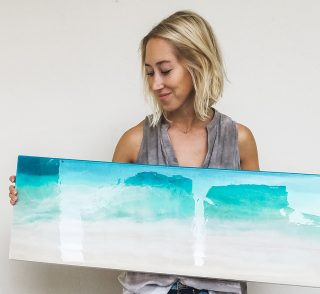I built up and sculpted the valleys and ridges of the ocean floor, carefully painted its depths, poured resin and acrylic, and let the rocking ship shift the resin until it cured, But as I continued to build up the layers, I started to feel a little sad. The beauty beneath the resin that I had so meticulously painted had almost disappeared. This finished painting wouldn’t be able to share it’s complete beauty. There’s so much more hidden beneath the surface. But as I looked out the portholes at the waves splashing against the ship, I realized how perfect that message was.

After a few days of mapping, staring at screens for hours on end, watching multi-beams gather data, spotting methane seeps, and recording our findings, it felt like we had accomplished so much. But when I went up to the bridge and looked out at the vast ocean and endless horizon, I was reminded that there is much more to learn and discover about our oceans and the mysterious life that lies below.
Luckily, there are so many people passionate about studying the hidden ocean depths. Part of Schmidt Ocean institute’s vision is, “the advancement of technology and open sharing of information will remain crucial to expanding the understanding of the world’s oceans.” Working with scientists aboard R/V Falkor opened my views to the importance of studying this planet even further so that we can better protect it. It also made me realize the importance to share that knowledge in a way that everyone can not only understand, but also love and appreciate. Working with the other amazing artists, I saw the mapping not as boring science data, but as beautiful colors of art bringing the ocean floor to life. If I can help share that appreciation of science and research to others, then we can work together to discover the beauty hidden beneath the surface so that we can all better our planet.

After leaving the ship, for a few days I continued to feel the rocking movement of the sea even on land. Although the rocking finally ended, my memories aboard R/V Falkor – learning from the scientists, absorbing new techniques from the artists, working on a ship with an amazing crew, and taking in the vast ocean views – are memories that will stay with me forever. I am so grateful for Schmidt Ocean Institute for this amazing opportunity to have artists collaborated with scientists and students and I hope to continue what I’ve learned (and continue to learn) in my future endeavors as an artist.


